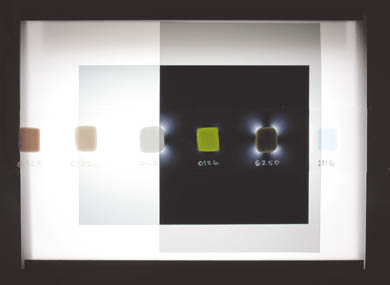 |
|
|
Kiln Pointers
|
|
|
School Science Projects and Kilns |
CONTENTS School Science Projects and Kilns Recent Q&As: Controller accuracy at room temperature; recommended sandpaper grit for firebrick sanding blocks Memorable Quote ----------- SCHOOL SCIENCE PROJECTS AND KILNS Your faithful kiln helps you to produce beautiful, handmade art. It can also come to your aid when your children need ideas for school science projects. Several idea starters: 1) Fuse small square glass pieces to a base layer of clear glass. Include glass squares in a range of COE ratings so that some are compatible and others are incompatible with the base layer. Then view the finished piece with polarizing filters and a lamp. A halo will appear around the square pieces that are incompatible with the base layer. 2) Some glazes can be altered dramatically merely by changing the cooling rate. Show samples of a glaze that has been cooled at a normal rate and at a slow rate. For more information see “Mastering Cone 6 Glazes,” by John Hesselberth and Ron Roy. 3) Fuse compatible glass pieces. Then cool them rapidly enough to create a stress fracture. 4) Make test tiles of a glaze. On one tile show crazing; on another tile show the glaze after you have changed the formula to eliminate the crazing. Your child will learn by doing the research that explains the physics principle behind the project. Send us an email to share your experiences with kiln-fired school science projects. ----------- RECENT Q&As Q. What is the lowest temperature that a kiln controller can accurately monitor? A. The Orton Sentry controllers equipped with the Type-K thermocouple can accurately monitor temperatures from -300F to 2400F. In actual practice this is from room temperature to the kiln’s maximum temperature. At low temperatures, the accuracy of Type-S thermocouples is not as good as the Type-K. This is because the Type-S thermocouple electrical signal is much smaller. At high temperatures, however, the Type-S thermocouple is more stable, because the Type-S wire does not degrade like the Type-K. Q. I have a Paragon kiln and recently used the dry patch cement to fix a broken firebrick piece. I would like to sand the seam flush. The instruction book says to use 285 grit sand paper. Home Depot says that is an automotive nomenclature. Auto Zone does not recognize it. You book says 285 is coarse, yet woodworking sandpaper would be very fine at that grit. Can you tell me more about 285 grit sandpaper, where I can get it, and what the equivalent grit is in woodworking grit numbers? A. I apologize for the confusion. Thanks for asking for clarification. We use Klingspor CS310 X, 36 grit to sand firebricks. ----------- MEMORABLE QUOTE "Remember not only to say the right thing in the right place, but far more difficult still, to leave unsaid the wrong thing at the tempting moment." --Benjamin Franklin ----------- Today at lunchtime, we held a Thanksgiving potluck--a Paragon tradition that dates back to the 1970s. The sounds of a forklift truck, drills, and punch presses were replaced by laughter and talking. Cooking smells lingered in the kiln inspection area. You can see photos of the event here: www.facebook.com/paragonkilns All of us at Paragon wish you a happy and safe Thanksgiving. Thank you, With best wishes, Arnold Howard Paragon Industries, L.P. – Better Designed Kilns 2011 South Town East Blvd., Mesquite, Texas 75149-1122 Voice: 972-288-7557 & 800-876-4328 / Fax: 972-222-0646 / ahoward@paragonweb.com / www.paragonweb.com / www.facebook.com/paragonkilns PRIVACY NOTICE: Under no circumstance do we share or sell your email address. Copyright 2010, by Paragon Industries, L.P. |
|
|

|
|
|
|
|
“Custom and standard Kilns and Industrial Furnaces for ceramics, pottery, heat treating, enameling, |
||||
